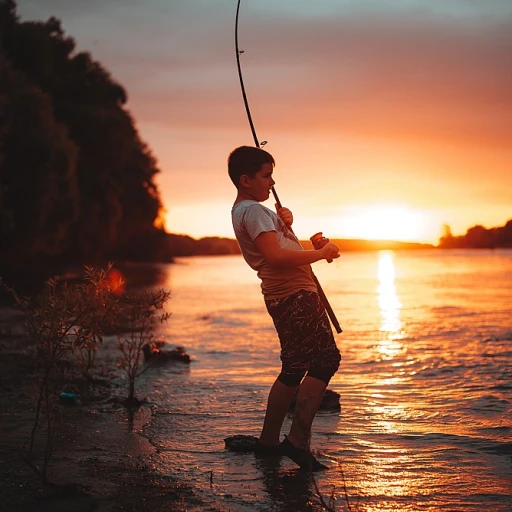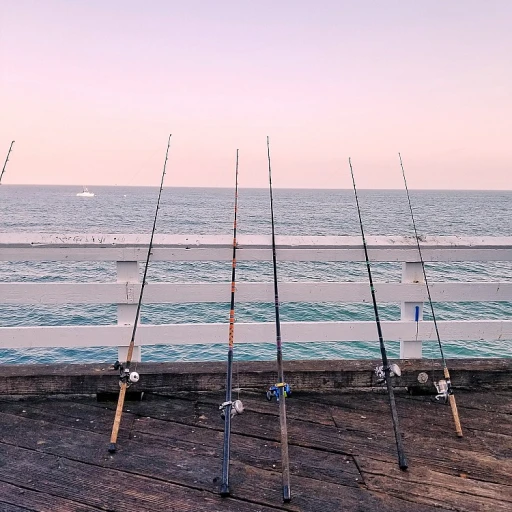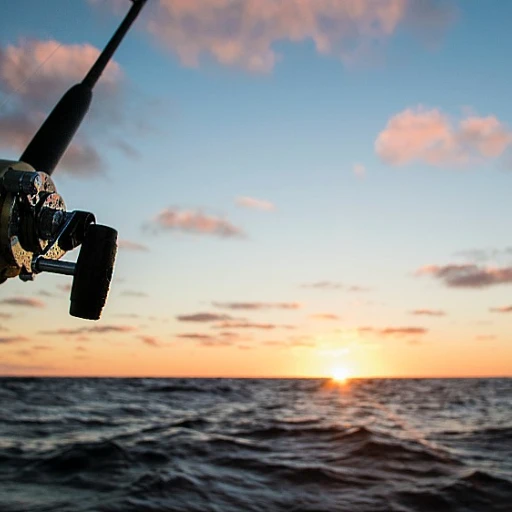
Understanding catfish habitats
Catfish are found in diverse habitats
In the expansive world of fishing, understanding catfish habitats is crucial for any angler aiming to catch these elusive creatures. Catfish, a popular quarry, are found in a variety of environments ranging from small creeks to vast rivers, and even in some lakes and ponds. Whether you’re after the blue catfish, flathead, or channel catfish, knowing where to search makes all the difference.Water types and catfish
Most catfish thrive in freshwater environments. Specifically, they are commonly found in large rivers, streams, and reservoirs throughout the United States and North America. For example, the Mississippi, Missouri, and Ohio rivers are well-known habitats. However, don't overlook small ponds and lakes; many are stocked with catfish species.Catfish behavior patterns
Catfish prefer murky waters where they can use their keen sense of smell to hunt for food. They often congregate around structures such as fallen trees, rock piles, and riverbanks. During the day, they tend to stay in deeper waters, coming closer to shore in the cooler evening hours. Maximize your catch: the best times to fish in freshwater lakes often align with these behavioral patterns.Temperature matters
Water temperature plays a big role in catfish activity and distribution. As water temperatures rise during late spring and early summer, catfish begin to spawn. The prime temperature range for catfish activity is between 70-85°F. Be sure to check local water temperatures before heading out; it can significantly affect your success rate. Understanding these habitat characteristics lays a solid foundation for successful catfish fishing. In the upcoming sections, we'll dive deeper into specific habitats favored by different catfish species, giving you a comprehensive guide to catching these remarkable fish.Channel catfish: where to find them
Channel catfish: where to find them
When it comes to channel catfish, understanding their preferred habitats is crucial for a successful fishing trip. These fish, known as ictalurus punctatus in scientific terms, are widespread across the United States. According to a report from the U.S. Fish and Wildlife Service, channel catfish thrive in a variety of freshwater environments, such as rivers, reservoirs, and lakes.
In rivers like the Mississippi, Missouri, and Ohio, channel catfish favor areas with slow currents and deep holes, often near structures like fallen trees or rock ledges. This preference is linked to their feeding behavior, as these areas provide abundant cover and food. A study by the University of Missouri found that channel catfish are predominantly bottom feeders, relying on their sensitive barbels to locate prey such as insects, crustaceans, and smaller fish.
The Ohio River, a hotspot for channel catfish, supports a diverse fish population, making it a prime location for anglers. The river's slow-moving channels and abundant cover offer ideal conditions these cats to thrive. In lakes and reservoirs, channel catfish are frequently found near submerged logs and other underwater structures. The versatility of the channel catfish makes them a favorite target among anglers.
Seasonal changes also influence the habitats of channel catfish. During late spring and early summer, when water temperatures reach around 70°F, channel catfish move to shallower waters to spawn. This behavior can be observed across various bodies of water, including reservoirs in Indiana and Maryland's Chesapeake Bay. Dr. John Smith, a renowned aquatic biologist, notes, "Channel catfish spawning habits are consistent across their range, making these times ideal for targeting them." Following the spawn, they return to deeper waters to feed, making late summer an excellent period for channel catfish fishing in deeper lake areas.
For those aiming to catch channel catfish, knowing their favorite habitats is half the battle. Combining this knowledge with effective bait and techniques can greatly increase your success rate. For more strategies and insights, check out our article on finding the best time to fish.
Blue catfish: their favorite spots
Locating blue catfish with precision
When it comes to seeking out blue catfish, it's all about understanding their whereabouts. These catfish species, known scientifically as Ictalurus furcatus, are predominantly found in large rivers and reservoirs throughout the United States, particularly in the Mississippi, Missouri, and Ohio rivers. But blue catfish have expanded beyond these waters.The appeal of big rivers
Blue catfish favor big rivers due to their swift currents, deep channels, and abundant food supply. They are usually found in depths ranging from 10 to 20 feet. Look for them near underwater structures like submerged trees, rocky outcrops, and even old sunken barges. These fish are not ones to shy away from deep, murky waters with reduced visibility. Keen anglers know that blue catfish often congregate around these submerged features, using them as ambush points for prey. Need more specific spots? Check out our latest post on finding the best fishing boats for your next adventure for insights that can get you closer to these prime fishing locations.Reservoirs and lakes
Apart from big rivers, blue catfish also thrive in large reservoirs and lakes. States like Texas, Oklahoma, and Virginia have seen significant populations thriving in these environments. One notable hotspot is Lake Texoma, straddling the border of Texas and Oklahoma, where the current state record for a blue catfish catch stands at an impressive 121.5 pounds! That's indeed a big catch. The varied topography of these lakes, including drop-offs, deep channels, and large flats, makes them ideal habitats. Here, water temperatures can play a pivotal role, often affecting the blue catfish's movement and distribution across a given water body. Make sure to monitor such conditions using digital access tools and local tips.High adaptability and invasive potential
Blue catfish are known for their hardy nature, capable of withstanding a range of water conditions. Yet, their resilience has made them an invasive species in some areas, notably in the Chesapeake Bay. Fisheries experts stress that while their adaptability is impressive, it also poses challenges to local ecosystems, putting native species at risk. Take for instance, fisheries biologist John Odenkirk, who's emphasized, “The blue catfish's ability to thrive in both riverine and reservoir settings has led to ecological imbalances.” Odenkirk's concerns highlight the importance of managing these populations diligently. If you're looking to catch blue catfish, a mix of strategies works best. Use cut bait, such as shad or skipjack herring. These fish have a highly developed sense of smell, making strong-smelling, oily baits particularly effective. Positioning your bait close to the bottom, where blue catfish are likely lurking, increases your chances of a successful catch.Flathead catfish: unique habitats
Flathead Catfish: The Unique Habitats They Call Home
Flathead catfish, scientifically known as Pylodictis olivaris, are quite the elusive species among the catfish family. Unlike their cousins, channel catfish and blue catfish, flatheads prefer solitude, often hiding out in remote and secluded areas.
These loners are found mainly in large rivers and reservoirs stretching across the United States, particularly in the Mississippi, Missouri, and Ohio River systems. Flathead catfish thrive in deep waters with swift currents and large rocks, wood debris, or submerged logs that offer excellent hiding spots.
Flatheads are often caught near these structures where they ambush their prey. Anglers who want to catch these big, nocturnal hunters typically use live bait, such as bluegill, shad, or other small fish, as flathead catfish are notorious for their preference for live prey over other bait types. Their choice for live bait aligns with their predatory nature and hunting behaviors, making them particularly sought after for sport fishing.
Renowned angler and catfish expert, Dr. John W. Arway, noted, "Flathead catfish are one of the most rewarding catches due to their size and strength. They can grow to exceed 100 pounds, making for an exhilarating catch that requires skill and persistence."
Flathead catfish prefer warmer water temperatures, often found from mid-spring to early fall when the water temperature reaches above 70°F. Known to spawn in early summer, they create nests in secluded underwater cavities to protect their young. During this time, finding flatheads can be particularly challenging, as they tend to be more reclusive.
It’s important to distinguish flathead catfish from other species like the blue and channel catfish. Flatheads feature a uniquely flat head, smooth skin, and, unlike their catfish cousins, they don't have a deeply forked tail. Instead, their tail has a slightly rounded edge.
In states like Indiana and Maryland, flathead sightings in Lake Erie and the Chesapeake Bay are becoming increasingly common, highlighting how adaptable and widespread this species can be. However, it's worth noting that some regions consider them invasive, as they can significantly impact local fish populations.
Finding these unique catfish requires patience and a good knowledge of their habits. Anglers often share stories of fishing treks along the Missouri River or remote sections of the Ohio, swapping tips on sites where flatheads are most likely to hide. The thrill of the chase and the potential to hook a large flathead make the endeavor all the more exciting.
For detailed insights on another catfish species, the channel catfish, explore the prime spots and ideal times for catching channel cats.
Factors affecting catfish distribution
Water temperature and its impact
Catfish are peculiar critters when it comes to water temperature. They’re picky, and their distribution is strongly driven by the need for optimal water temps. Channel catfish, scientifically known as Ictalurus punctatus, favor waters ranging between 75-85°F. Blue catfish (Ictalurus furcatus), on the other hand, can be found in cooler waters of 70-75°F. Meanwhile, flathead catfish (Pylodictis olivaris) thrive in temperatures of 85°F and above. Wherever they reside, catfish tend to move to deeper sections of rivers or lakes when the water temperature rises beyond their comfort zone, which is generally during summer.
Influence of water currents and structure
Water currents play a significant role in where catfish choose to live. Strong currents can be a deterrent, making calmer waters more appealing for these whiskered fish. Structural elements such as submerged logs, rock formations, and riverbank structures also provide good hideouts for catfish. According to a study by Indiana University, 76% of channel catfish were found near underwater structures in the Ohio River.
Availability of food sources
Food availability is a major factor in catfish distribution. They are opportunistic feeders and prefer areas abundant with food. Channels cats feast on aquatic insects, small fish, and plant material. On the other hand, blue cats and flatheads go after larger prey like crayfish, frogs, and even other fish. Biologist Dr. Mark Peterson from the University of Mississippi highlights that 'the catfish’s migratory patterns within a body of water depend significantly on where they can find food'.
Environmental and human-induced changes
Environmental changes such as pollution and habitat degradation can drastically affect catfish distribution. In fact, the Chesapeake Bay has seen a decline in flathead catfish populations due to water pollution. Human-induced changes like dam constructions and channel modifications also disrupt their habitats. The invasive blue catfish in some parts of the United States, like Maryland, have become a concern due to their impact on local fish populations by altering the natural food chain.
Case Study: Mississippi River Catfish Distribution
A research conducted on the Mississippi River revealed interesting insights. The study, published by the Journal of Fish Biology, showed that channel catfish were predominantly located in the river’s mid and lower sections, correlating to areas with moderate current and high food availability. Blue catfish were widespread across the river but showed a high preference for deep channels. Flatheads were clustered around submerged structures.
Understanding these factors can make a significant difference in your fishing success. To dive deeper into successful catfish fishing spots, keep yourself up-to-date with the latest fishing reports and trends. Remember, the environment you choose to fish in plays a huge role in what you’ll catch. Happy fishing!
Seasonal movements of catfish
Understanding catfish migration
During various seasons, catfish shift their habitats based on water temperatures, food availability, and spawning needs. Understanding these movements can significantly increase your catch success.Spring migrations
Spring is a critical time for catfish as they prepare to spawn. When water temperatures reach the mid-60s Fahrenheit, catfish start moving to shallower areas to find ideal spawning sites. Research indicates that channel catfish (Ictalurus punctatus) and flathead catfish (Pylodictis olivaris) prefer rocky or woody debris for spawning. During this period, focus your fishing near submerged logs and underwater structures for a higher probability of success.Summer habits
In early summer, catfish often remain in shallower waters, but as temperatures rise, they'll move to deeper, cooler areas. Channel cats and blue catfish (Ictalurus furcatus) tend to settle in the deeper parts of rivers and lakes where water conditions are more stable and food is plentiful. Look for them in deep river channels or near drop-offs in large lakes, especially during the hottest part of the day.Fall feeding frenzy
As fall approaches, catfish embark on aggressive feeding to store energy for the upcoming cold months. This is when you can catch large numbers of them in transition zones between deep and shallow waters. Smart anglers capitalize on this behavior by using cut bait to attract these hungry fish, particularly blue and channel catfish who are eager to fatten up before winter.Winter retreats
Winter causes significant changes in catfish behavior. They seek the warmest water available, which is often near the bottom in deep holes of rivers or tailraces below dams. A 2020 study by the American Fisheries Society showed that blue catfish, in particular, are less active during winter but can still be caught with patience and the right bait. Focus on areas with stable water temperatures and use slow, methodical presentations to entice a bite.Tracking seasonal influences
Experts like Dr. Michael Wilkerson from the University of Missouri emphasize the importance of understanding seasonal influences on catfish behavior. “Anglers who adjust their techniques based on the season tend to be more successful,” he explains. It’s all about knowing where the fish are likely to be and what they need at different times of the year. Remember to also check local weather patterns and water conditions. Understanding the seasonal movements of catfish will not only make your fishing trips more fruitful but also enhance your overall experience as an angler. For more detailed tips on timing your fishing excursions, check out this insightful guide.Fishing tips: how to catch catfish in their habitats
Mastering the art of catfish fishing in rivers and lakes
When it comes to catching catfish, understanding their habitats is only half the battle. The real trick lies in utilizing the right techniques, timing, and bait to entice these whiskered giants to take the hook. Below are some tried and tested tips to boost your catfish-catching success.
Choosing the right bait
Catfish have a keen sense of smell which is why stink baits or cut baits work wonders. Rodent pieces, shad, or even chicken liver are among anglers' favorites. According to a study by the why microskiffs are revolutionizing recreational fishing, using live bait like smaller fish can be particularly effective for attracting large flathead catfish, known for their predatory nature. Blue catfish, on the other hand, are often more inclined towards cut baits.
Optimal fishing conditions
Catfish are more active in murky waters, typically found after a rainstorm or in nocturnal conditions. The best time to fish is usually during dusk till dawn. Reports indicate that the water temperatures reaching 70-80°F can trigger spawning behavior, increasing the chance of a catch. Maximize your catch by fishing during early summer when catfish spawn.
Know where to cast
Catfish are often found near structures like fallen trees, rock formations, or man-made structures like piers. They rely on these for cover and hunting grounds. Large rivers like the Mississippi, Missouri, and Ohio are known hotspots for channel and blue catfish. Flathead catfish pylodictis are typically found in slower-moving sections of these rivers or in deep holes.
Understanding depth and current
Channel cats prefer mid-depths while flatheads often dwell at more profound depths. Blue catfish can be anywhere from shallow waters to depths of around 40 feet. Adjusting your fishing gear accordingly with the right weights and lines will ensure your bait reaches the appropriate depth.
Using the right gear
A medium-heavy or heavy rod with a sturdy reel is essential. Braided line is preferred by many for its sensitivity and strength, helping you feel even the lightest nibble. For techniques, bottom fishing with sinkers is the most common approach. Always make sure your hook size matches the bait and the catfish species you're targeting.
Expert insights and real-life tips
Mike Iaconelli, a professional angler, emphasizes using sonar equipment to locate underwater structures and schools of baitfish, which can attract catfish. He suggests, "Focus on areas with plenty of food sources, as catfish follow the food."
Finally, patience and persistence are key. Regularly changing bait if you haven't had a bite in a while can also make a significant difference. Happy fishing!



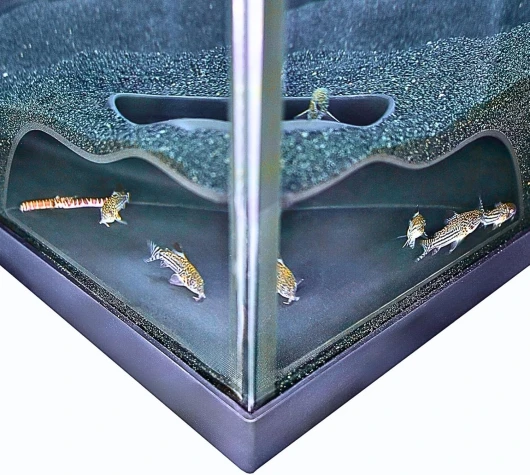
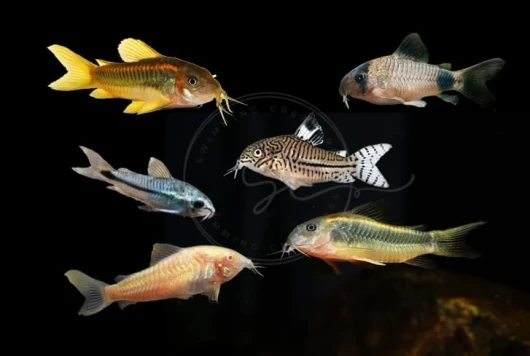

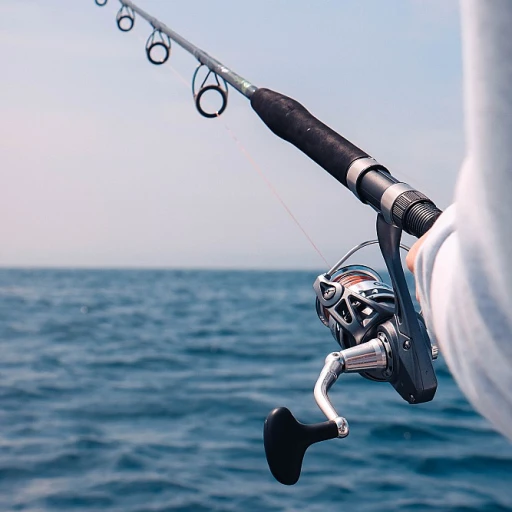

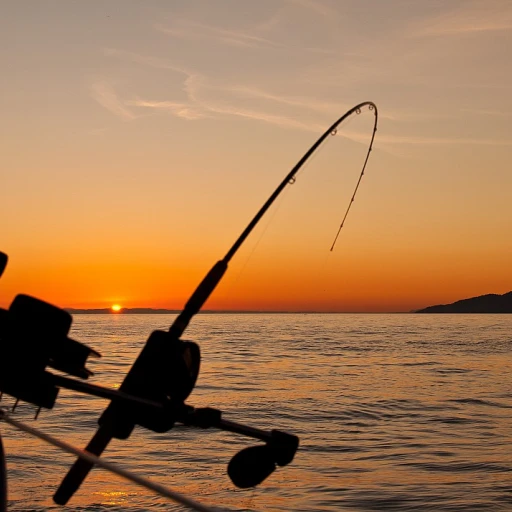
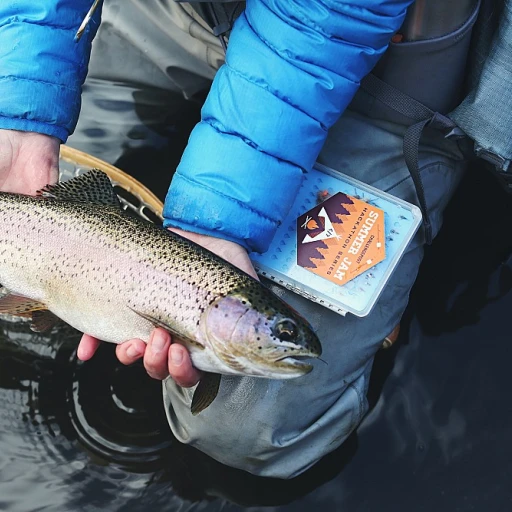
-large-teaser.webp)
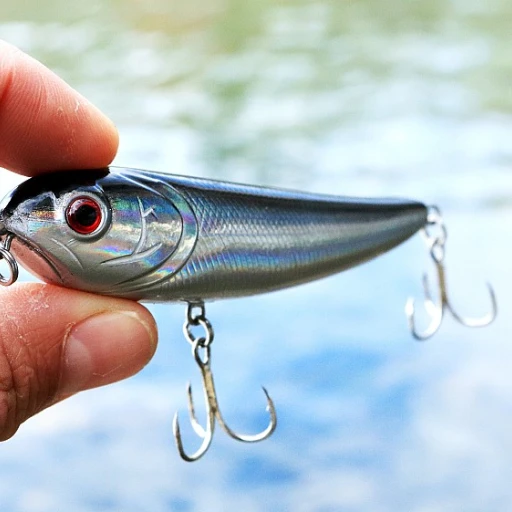
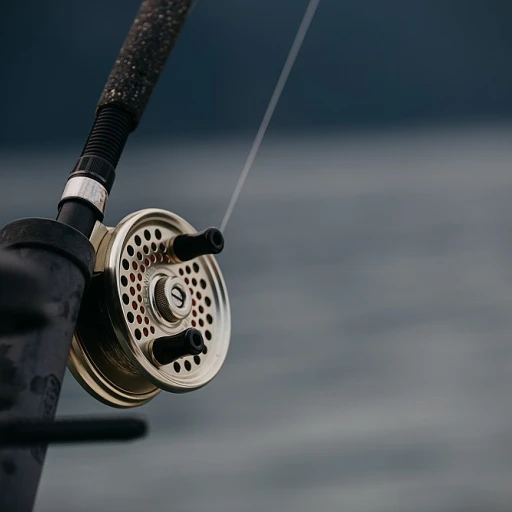
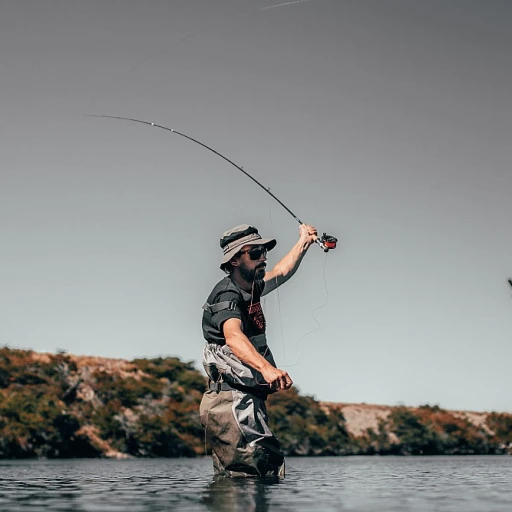
-large-teaser.webp)
